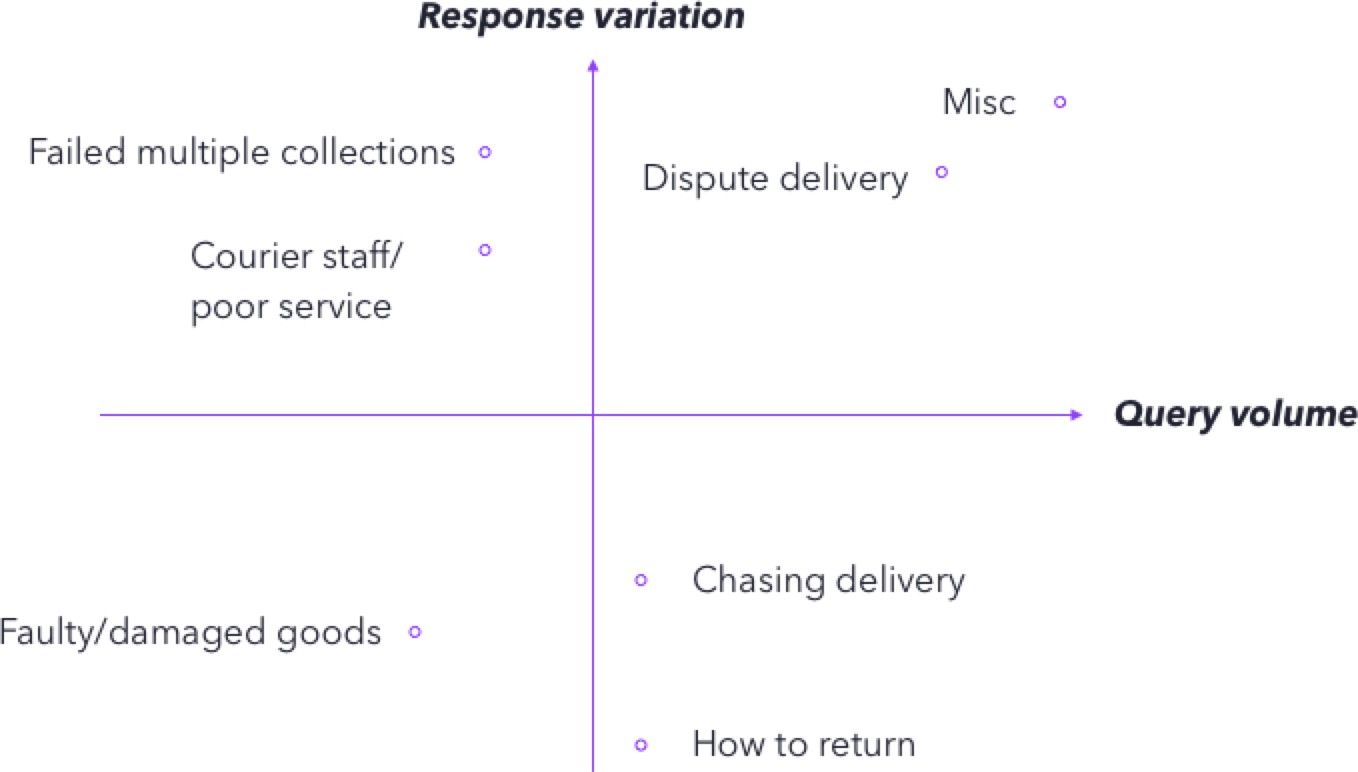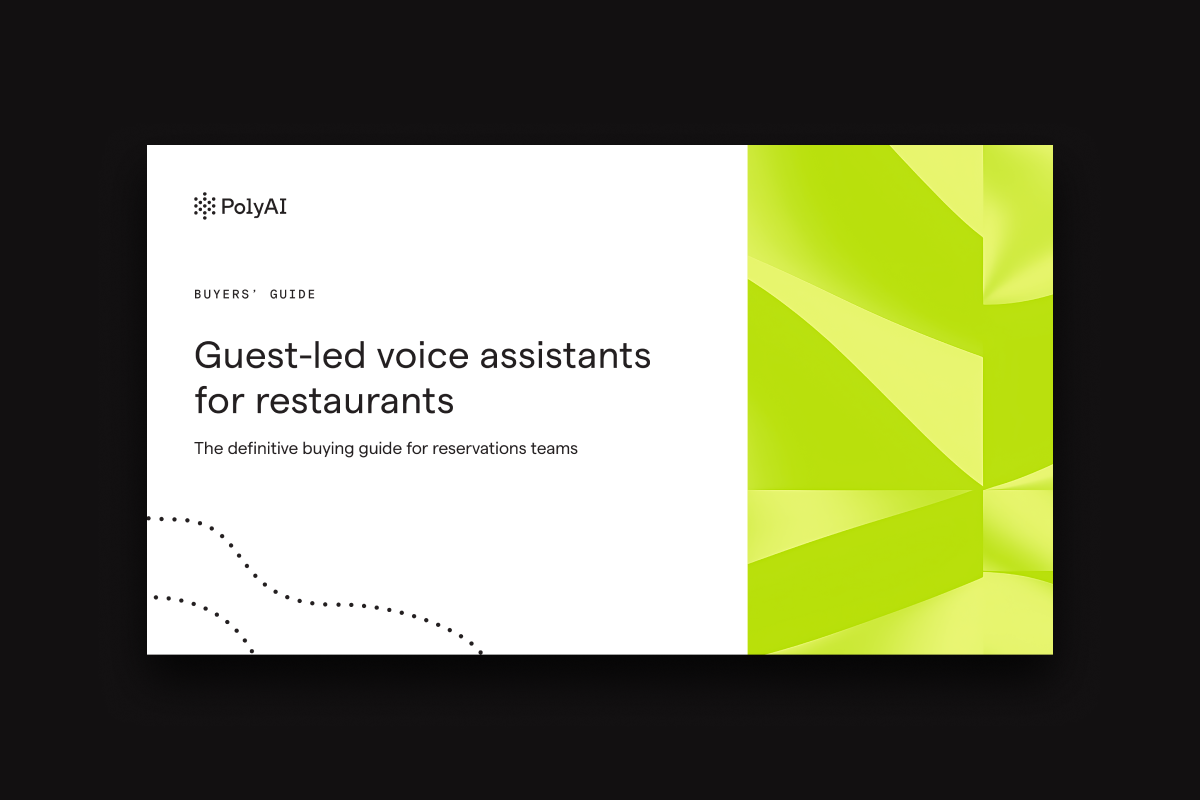When considering automation within your customer service department, it is fundamental to understand customers’ end goals – the outcomes your customers expect when interacting with your business.
Most AI agents use a process called intent detection to understand what the customer wants to achieve. While the technicalities of intent are best left to machine learning experts, anybody thinking of automating a customer service process using artificial intelligence will benefit from isolating and understanding the end goals that customers are looking to achieve.
What kind of goals should I be looking to automate?
The kind of end-goals you should automate are the kinds of outcomes that customers expect from customer service interactions, the same actions that customer service agents need to complete in order to successfully address the query.
For example, in a retail business, these goals might include:
- Place an order
- Chase a delivery
- Request a refund
- Amend an order
- Report a damaged item
In an insurance business, these goals might include:
- Make a claim
- Sign up for a policy
- Upgrade a policy
- Get information on a policy
- Retrieve a quote
Whether or not these goals are addressed is going to be one of the key metrics for success of your AI agent. If you’re aiming for a 100% containment rate, your AI agent will need to fully automate 100% of customer queries without handing off to a human agent.
When you’re considering what to automate, you should first identify the end goals relevant to your customers and customer service team. Only once you’ve taken the time to consider all of the outcomes your customers expect, can you make informed decisions about which ones may be best suited to automation.
Response variation vs frequency of queries
Once you’ve identified the different intents, you need some way of assessing whether or not AI is the best way of dealing with them.
The following chart shows a few different customer service goals, typical of retail businesses. They’re mapped against:
- Response variation – how varied are the responses agents give when dealing with certain goals?
- Query volume – how often do customers express the goals?

In this use case, disputing delivery is a goal that pops up a lot, but the variation within agent responses is high. In this case, there is no clear response that doesn’t require more digging on the agent’s behalf.
The faulty or damaged goods goal requires the agent to follow a simple, repetitive process. Perhaps they request a photo, and for the item to be returned, and then they can issue a refund or replacement. In this case, the steps the agent takes are usually consistent. Anyone armed with the support manual would be able to follow the process; and if you can write it in a manual, you can teach it to an AI agent.
The problem with this particular goal is that it doesn’t come up that much. Is it really worth the effort of creating an AI agent that can deal with this, if there just isn’t much demand?
Understanding how the frequency of certain end-goals and how long agents typically spend realising them will give you a baseline idea of whether they are worth automating. You don’t want to spend all your money on a solution to answer questions that nobody’s asking. For AI agents to be worth the investment, they need to be more efficient than your existing processes. That much is simple.
It’s not all about the end goal
There may be specific tasks that occur across user goals that you can automate. Identification and verification (ID&V) is a good example. Customers don’t call you because they want to be identified and have their information verified, but you do need to put them through this process to protect their information.
In conclusion
We’re now at a point where AI can be a valuable asset to businesses dealing with high levels of customer support. But working with such a new technology comes at a cost, and decision makers will need to dig deep into their existing processes and unit economics to find the solution that’s right for them.
When you’re exploring opening your customer support to AI, make sure to spend some time identifying customers’ end-goals and thinking about whether an AI agent might be able to improve upon your operational efficiency and customer satisfaction.
If you’d like to discuss the potential of AI in your customer service department, get in touch with PolyAI today.




